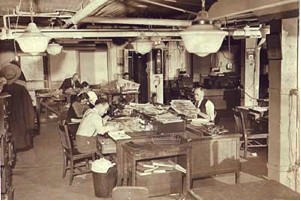History of Success
 The
Times Union
traced its history back to 1856, when three entrepreneurs rolled a four-page broadsheet off a
letterpress in Albany’s city center
. At the time, dozens of politically partisan daily and weekly papers crowded New York’s capital region. An emphasis on people, commerce, and community distinguished the paper from the daily political content printed by competitors. This approach helped lift what was then known as the
Albany Morning Times
above the heap of failed penny press in the latter half of the 19th century, and by the early 1900s the paper had achieved a solid footing in Albany.
The
Times Union
traced its history back to 1856, when three entrepreneurs rolled a four-page broadsheet off a
letterpress in Albany’s city center
. At the time, dozens of politically partisan daily and weekly papers crowded New York’s capital region. An emphasis on people, commerce, and community distinguished the paper from the daily political content printed by competitors. This approach helped lift what was then known as the
Albany Morning Times
above the heap of failed penny press in the latter half of the 19th century, and by the early 1900s the paper had achieved a solid footing in Albany.
The Albany Morning Times grew up through the next several decades: It added a better printing press, hired experienced publishers, and bought out competitors. In 1891, the paper changed its name to the Times Union . During World War II, the paper earned world renown. The Times Union landed the first interview with famed scientist Albert Einstein in August 1945 after the US dropped an atomic bomb on Hiroshima, Japan. A Times Union reporter tracked the famous professor to his vacation home in the Adirondacks, and was granted a rare face-to-face interview. The exclusive story was reprinted worldwide.
In 1924, the paper’s aging publisher and owner sold the Times Union to newspaper mogul William Randolph Hearst. This made the paper part of one of the most powerful media empires of the age. With market leadership and Hearst’s deep pockets, the Times Union enjoyed decades of prosperity.